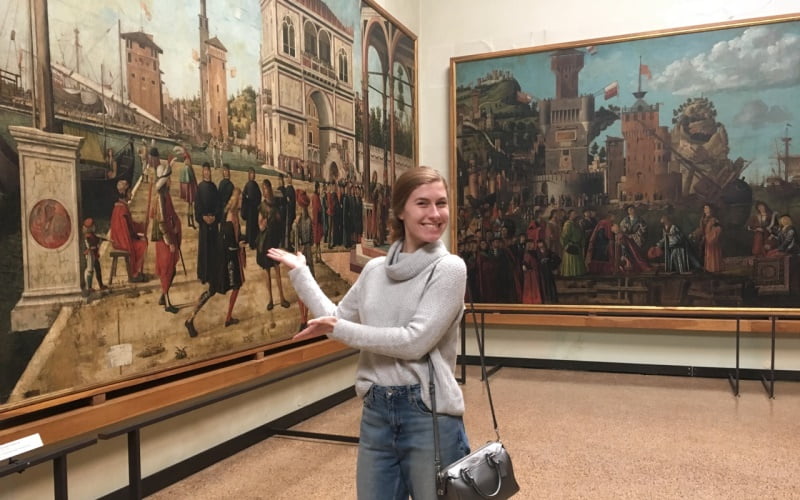Art & Art History Department

Art & Art History Department Overview
Hartwick art students master theory and practice through hands-on learning with expert faculty. They learn to think critically and creatively about visual culture and to make art using traditional methods and new technologies.
Career Tracks
By following different tracks, creative career goals can be custom made for each student. For example a student interested in being a creative in an advertising firm would be an art major concentrating in digital art and design with a secondary concentration in drawing or photography. They should also be a business minor and should take a couple of intro psychology and mid level English classes. The student would also participate in at least one design based internship.
The department offers major and minor degrees in studio art as well as minors in graphic communications and photojournalism.
The studio art degree offers concentrations in: Ceramics, Digital Art & Design (includes Video, 2D Animation, Graphic Design and Digital Art), Drawing (includes Illustration), Glass, Painting, Photography (both Traditional and Digital), Printmaking, and Sculpture.
All degrees offered by the Department of Art & Art History at Hartwick College, are certified by the National Association of Schools of Art and Design (NASAD).
Review all the requirements in the College Catalog.
Art & Art History Courses
The Art & Art History Department offers a diverse catalog of courses in a variety of media including: painting, drawing, illustration, ceramics, glass, sculpture, photography, printmaking, video, 2D animation, graphic design, and digital art. We cover art history from ancient to contemporary art with special topics courses that explore specific areas around the world. Class sizes are kept small to ensure one-on-one collaboration between students and professors and easy access to studio equipment.
Review the current course offerings in the College Catalog.
ART PORTFOLIO
Interested in majoring in art? While a portfolio is not required for admission to the art department, it is encouraged.
Please submit, via single PDF or a link via Google drive, 15-20 images of your best work for review. Include title, material and date of each piece of artwork.
Send your portfolio to artandarthistory@hartwick.edu or set up a portfolio review in person during your campus visit.
The art faculty will be available to review portfolios during all Open Houses and Art Discovery Days.
Special Opportunities
Hartwick art and art history students have access to many exploratory and creative opportunities on and off campus. Visiting artists and artists in residence present their work and give demonstrations throughout the school year. Studio spaces are large and contain both traditional and emerging technologies. Small class sizes ensure students have easy access to materials, equipment and professors. A bus trip to NYC runs every semesters and J Term off campus trips to Hungary and Italy are offered every year. Class field trips regularly bring students to regional museums such as the Fenimore Art Museum, Munson Williams Proctor Arts Institute, Massachusetts Museum of Contemporary Art, and Corning Glass Museum. Students also have access to art and art history specific scholarships and mini grants.
Still Have Questions?
Contact the Art & Art History Department